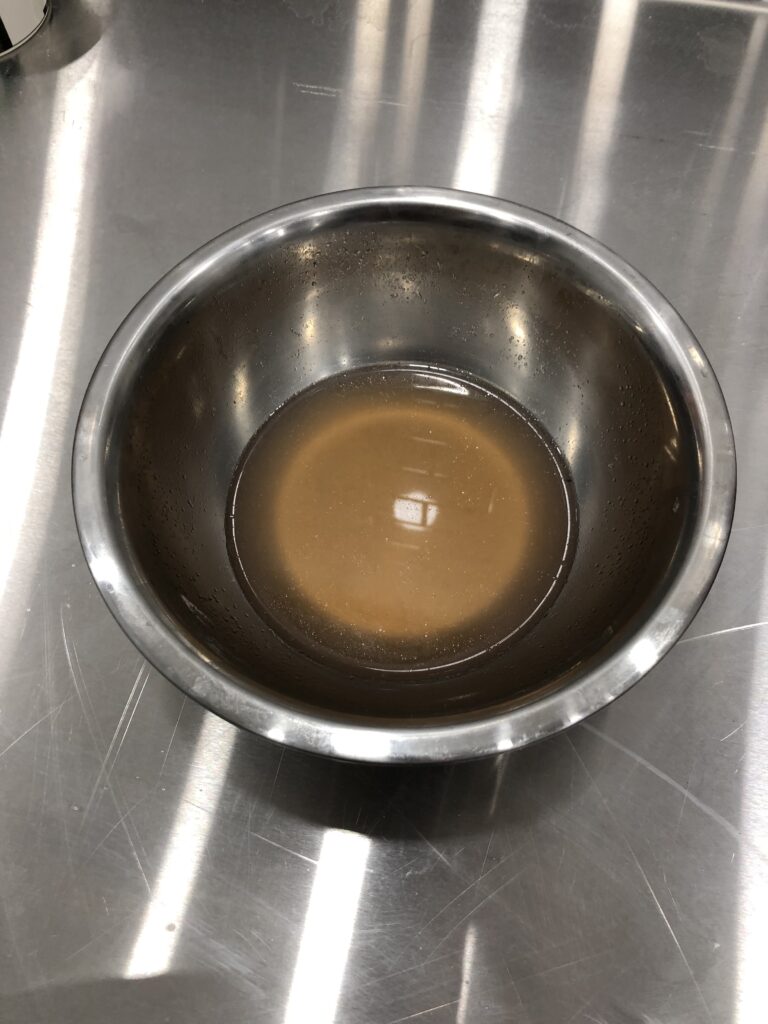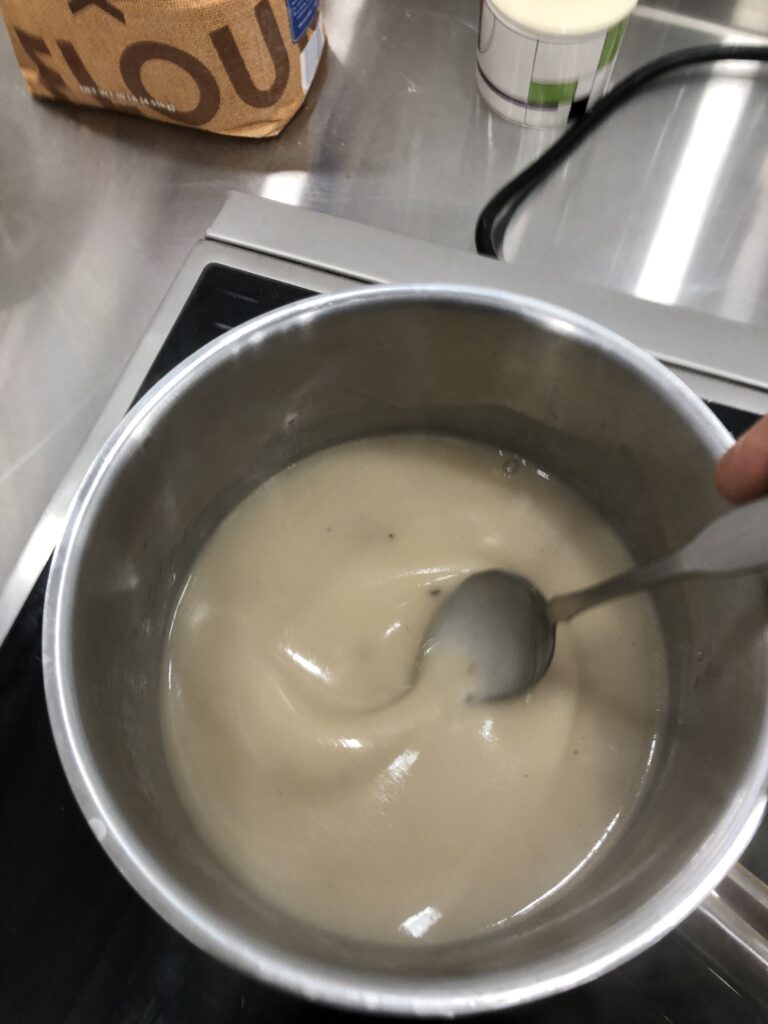Try one of the other five French Mother Sauces
This is where our exploration of French sauces gets more complicated, but after mastering the first two sauces we are boiling with confidence and ready for challenge. This recipe calls for a consume made from stock. I like to make this sauce when I sous vide either chicken or beef because you get a nice stock from the sous vide process. You can of course buy stock at the store, but that reduces the satisfaction of making this sauce from scratch.
When I make this sauce using store bought stock, I hear old French chefs scoffing at me with derision. So to avoid their condemnation, I strive to make my own consume. Before we get into the art of that though, lets lay out the ingredient list for Veloute sauce
- 3 TBL butter
- 3 TBL flour
- 2 cups (16 oz) chicken or beef consume (or stock if you’re auditing)
- Salt and pepper to taste
I’m going to make sous vide chicken using bone-in, skin-on chicken thighs and will use the post sous vide stock to make my consume. But before we jump into the sauce making steps, lets take a moment to talk about consume.

Consume is a clear sauce made from rich stock that has been clarified. Like an old school wine maker who uses egg whites to clarify wine, Chefs often use egg whites to clarify consume. The proteins in egg whites have an opposite charge than fats and other solids in stock so cling together and either settle to the bottom of a pan or float to the top in a raft that can be skimmed off. Another key step in making consume is simmering to reduce and thereby intensify flavors while skimming fats. Elements of the egg whites that don’t settle will form a “raft” at the top of the pan while simmering. If you have the opportunity, make your consume a day in advance, that way you can refrigerate it and further separate the fat solubles from the liquid.
The process for making Veloute is
- Make the consume: If you can pre-make the day before and refrigerate to enhance purification. If you are making it from the juices of your entrée, clarify as best you can. If you are making Veloute from chicken stock, you want the consume to be yellow but if you’re using beef as the base it should dark brown.
- Make the roux: On medium heat, melt butter in a medium sauce pan and stir in flour. If the roux is for a chicken based sauce, lightly toast the flour. If the roux is for a beef based sauce let the roux toast to a darker tone thus releasing more of the flour’s nutting potential. Either way, be careful not to overcook the roux or it will ruin your sauce. You’ll know the roux is ready when it is silky smooth and has the desired color.
- Add the consume: While stirring the roux, slowly add consume in stages careful to smooth out the roux as you go to avoid lumps in your sauce. Once all the consume has been added, bring sauce to boil stirring frequently. Note: The closer your elevation is to sea level, the higher the temperature will be when boiling begins and thus, the greater the potential for burning the sauce. Where I live, @ 7,500 ft. elevation, boiling begins 10 degs. cooler than at sea level.
- Simmer the sauce: As soon as the sauce begins to boil, reduce heat to a simmer for 15 mins. This sauce is not intended to be overly thick so you don’t have to reduce too much and you certainly don’ t have to add starch.

To make this Veloute sauce, I first sous vide 8 chicken thighs with the skin on and bone. Once they were done in the sous vide, I drained the juice to make the consume. After that I followed the Veloute recipe. The chicken I finished in the broiler and plated with cuscous, cauliflower roasted with paprika and blanched asparagus that I lightly sautéed with olive oil.


Will I get enough post sous vide stock from 8 bone0in, skin-on thighs? If not, should I augment with store purchase stock?
Depends on how much sauce you want. Yes, boast it up with stock from the store.